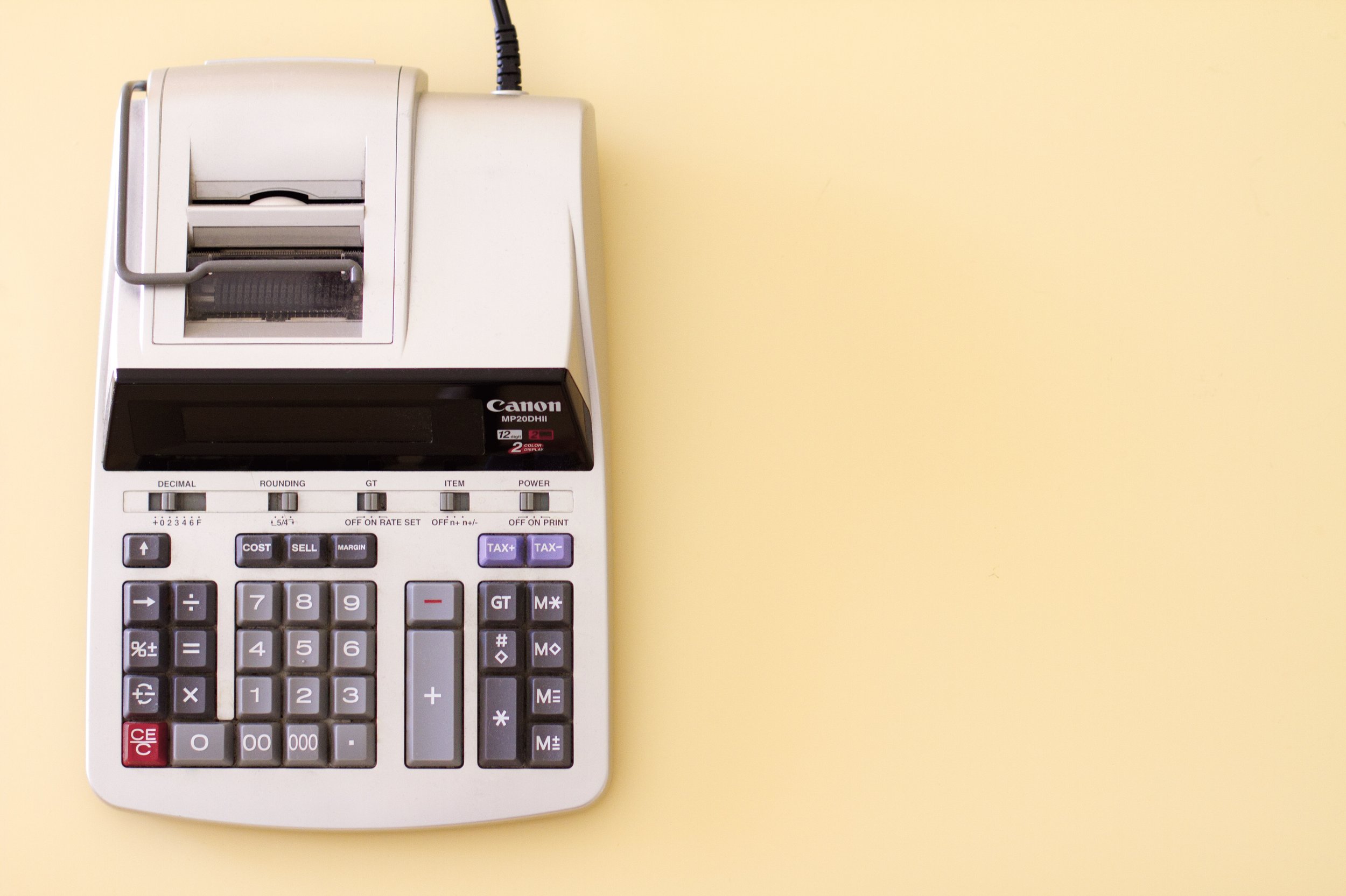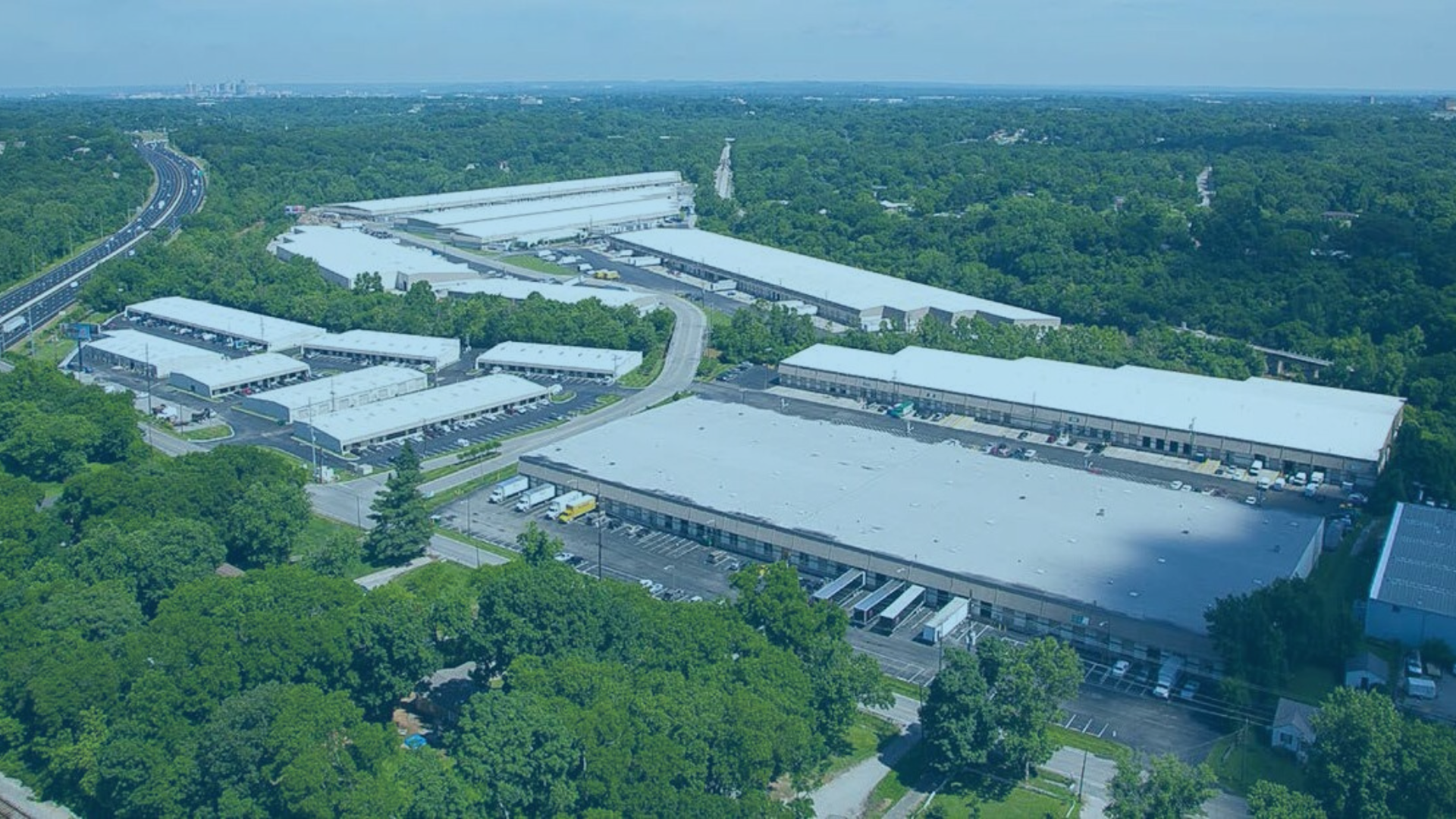Building Your Commercial Real Estate Investment Portfolio
Commercial real estate is an incredible wealth-builder.
These properties can provide you with cash flow, appreciation, tax advantages, and other benefits unlike any other investment vehicle.
If you’re looking for the ultimate retirement plan, commercial real estate investments might just be the path for you and are a terrific way to diversify, if nothing else.
Here’s how to build a portfolio of commercial investment properties:
Why You Need Commercial Real Estate in Your Portfolio
Commercial real estate is one of the best investments you can make.
In fact, 10% of the world’s billionaires built their wealth through real estate investments.
Why does commercial real estate make for such a necessary addition to every investor’s portfolio?
Because of the stability, cash flow, appreciation, and tax advantages.
Historically, commercial real estate returns sit neatly between the high volatility of stocks and the low volatility of bonds, making it a solid, middle of the road investment in terms of risk.
Yes, the stock market has slightly outperformed commercial real estate historically, but it doesn’t offer investors the same benefits. In commercial real estate, investors can:
Receive passive income through cash flow
Utilize third-party capital to acquire the investment (debt / leverage)
Write off a significant amount of tax liability
Touch and see the asset since it’s tangible
So, if you’re interested in those returns, buy commercial real estate!
Step 1: Choose an Asset Type
When you first start investing in commercial property, it’s important to decide upon an asset type.
There are many shiny objects in real estate.
Different property types.
Different investment strategies.
There’s almost an infinite amount of ways that you can approach this investment vehicle.
However, in order to give your investment the best chance for success, it’s important that you become a knowledgeable and competent investor.
Finding Your Niche
Decide which asset type you’re going to focus on and invest in.
There are a number of different commercial real estate assets available to you as an investor.
Here are the primary commercial property types:
Multifamily
Office
Retail
Industrial
Hospitality
Each of these asset types has it’s own pros, cons, and quirks.
I recommend that you study each of them thoroughly before beginning your journey - you may just realize that another asset type is more appealing to you for the long-term.
Become the expert in this niche and be the most knowledgeable investor in your market for this asset type. That will come in handy when other investors or brokers find an asset that fits your criteria - they will immediately think of you.
Economies of Scale
One of the primary benefits of focusing on your niche are the economies of scale.
If you’re looking to significantly grow your portfolio of commercial real estate investments, you’ll need to be able to scale and benefit from the synergy your own properties create for each other.
Let’s say you focus on office space.
You’ll be able to move office tenants between your buildings if they grow or downsize, you’ll be able to properly and efficiently manage your properties since you’ll have your systems down, and you’ll become the go-to person for that investment type.
Digging down and focusing on a single property type, at least when you’re getting started, is the best way to start your commercial investing career.
If you want to become the biggest tree in the forest, you need the strongest roots.
Step 2: Choose an Investment Strategy
Now that you’ve chosen an asset type, it’s time to choose your strategy.
Think intently about your long-term goals and risk aversion.
What you’re looking to accomplish will determine which investment strategy will be right for you.
There are many different investment strategies that you can choose from and just like choosing your asset type, it’s best to niche down and focus!
What Kind of Investor Do You Want to Be?
Are you looking to aggressively grow? If so, you’ll be more keen to take risk.
Or maybe you’re just looking to conservatively build and preserve your wealth. If that’s the case, you’ll want something that’s far more stable.
The great thing about commercial real estate is that there’s an investment strategy for everyone.
Different Investment Strategies
There are a number of different commercial real estate investment strategies out there.
Here are just a few:
Land Banking - purchasing tracts in the path of development for appreciation
Development - taking raw land and re-imagining what could exist on that property
Fix & Flip - buying a property, making any repairs and upgrades, and reselling it
Wholesaling - Putting a site in contract (often off-market) and selling that contract
Owner-Occupied - Purchasing real estate to operate your business
BRRRR (Value-Add) - Buy, Rehab, Rent, Refinance, Repeat
Long-Term Hold - Purchasing a property for long-term cash flow and appreciation
You have plenty of options to choose from depending on your risk tolerance and inclination to actively work on a project.
If the property has a higher the risk profile and needs more active attention, you’ll likely experience better returns.
On the flipside, if the property has a low risk profile and requires zero oversight from the ownership, you’ll find lower, albeit more stable, returns.
Step 3: Explore Funding Options
You don’t have to pay cash when investing in commercial real estate.
In fact, you don’t have to come out of pocket at all, if you structure the deal correctly.
The first investment I ever made was a small 6,000 sq. ft. office building about 15 minutes from downtown Nashville. And I paid zero out of pocket.
How?
Since I have my real estate license, I negotiated for the sellers to pay me a commission, which would be paid at closing. That amount become my initial equity contribution and I raised the rest of the equity from two investors.
We received a loan from a commercial lender to cover the rest and that became my first investment.
Raising Equity for the Deal
When purchasing commercial real estate, you will need to source equity, whether you intend to utilize a commercial loan or not.
Equity is simply the amount of money you’d receive after paying all expenses if you sold the investment.
Most commercial property investors will raise 20%-25% equity to purchase a property and finance the rest with a commercial loan.
So, where do you find equity?
There are many different ways to find equity for your investments.
You could place that capital yourself and forgo bringing on partners. You could pitch the project to other investors and share the deal with them. Or, if you buy the property right, you may “find” equity in the property if the appraisal comes back higher than the purchase price.
Any way you cut it, you will need to bring equity to the table when building your portfolio.
Sourcing the Debt from a Lender
Lenders are an excellent source of capital if you’re looking to grow a portfolio of commercial properties.
Equity is very finite and there are only so many properties that you can purchase before you’ve run yourself out of capital.
That’s where commercial loans come in to play.
You need to start building relationships with lenders far before you start searching for property.
After all, they will be your money partners.
They will have a vested interest in the project’s success and these lenders will often go to bat for you if you haven’t yet built your track record when you’re looking to secure a loan from a bank.
Lenders will have varying requirements for the project in order for them to consider lending to you. These may include:
Debt Service Coverage Ratio (DSCR) - project cash flow to debt obligations
Loan to Value - how much of the purchase price they’ll give based on property value
Loan to Cost - how much of the purchase price they’ll give based on purchase price
If your focus is to build a portfolio, these relationships will be crucial to your ability to scale - no cash, no deals.
Other Finance Options
If you choose to forgo the traditional commercial loan route, you still have a few options.
Among the most popular are:
Hard Money Loans - private money loans with shorter terms
Owner Financing - the seller of the property finances your purchase
Rent to Own - rent payments apply to the purchase price
You can also get creative with funding.
Another one of my favorite resources for finding capital for equity is utilizing a line of credit.
When you own a property and have equity built up in it, you can take out a line of credit on that property, guaranteed by the equity, for use as the down payment for your new investment.
As long as you’re willing to get creative, you can always find a way to fund the deal.
Step 4: Start the Search
Now that you’ve educated yourself on your niche, decided upon an investment strategy, and figured out how you’re going to fund your project, it’s time to start the search.
And there’s a reason I recommend you take those other three steps first.
When you dive into the world of commercial real estate, you’ll be working very closely with other commercial real estate brokers and investors. It’s a very tight-knit community.
You don’t want to get a reputation for not knowing what you’re doing or being unable to close a deal - it will make your journey that much more difficult.
Commercial real estate brokers are often the gatekeepers to solid deals.
And brokers like to get paid!
Since brokers only get paid commissions after a deal has closed, they’re going to present deals to the investors that they are confident will be interested in and can close on the investment.
So let’s get your search started.
How to Find an Investment Property
Finding a good deal can often be the most challenging part of this process.
Some will say raising capital can be difficult, but in my experience - if you find a good deal, the money will follow.
So, if you’re looking to find an investment property, here are a few different methods you can take:
Commercial Brokers - Likely your best option, since they’re doing a combination (if not all) of the other methods below. If you’re buying property, their commissions are charged to the seller, so you don’t have to pay for their services.
Networking - Get to know other property owners in the area by networking at industry events or neighborhood meetings. Let them know that you’re on the search for commercial investments - you never know when something will come available.
Cold Calling - Find numbers for the property owners and start calling them asking if they’re interested in selling the property. If they aren’t at that time, have them keep your number in case anything changes. And follow up with them!
Mailers - Finding the proper owner can be difficult in commercial real estate since the ownership entities are often hidden. Send letters and postcards to the mailing address on a regular basis.
Drive the Market - Drive around and knock on doors! I like to look for properties that look unkempt. Those owners may either live out of state or may not have the funds to keep the property up, which means a buying opportunity for you.
Look at As Many Deals as You Can!
This step is key.
I’ve seen far too many investors give up before they find a deal.
“There aren’t any deals in my market,” they always say. “It’s just too hot.”
I’ll always follow those questions up with “How many offers have you made this week?”
I’m sure you can guess what the reply is…none!
It may take your reviewing 100 deals just to find 1 that will work for you and your criteria. You should be reviewing every deal possible and making offers, even if you feel that they’re too low.
You’ll never know what’s under that rock if you never turn it over.
Step 5: Conduct Your Due Diligence
Once you’ve found the property and placed it under contract, it’s time to conduct your due diligence.
As you grow your portfolio of commercial properties, having the right systems in place to thoroughly vet each of your properties prior to your investment will become more and more important.
After all - scale can be a double-edged sword if you’re buying the wrong properties.
Perform Your Inspections
First, you’ll conduct your physical inspections of the property.
When inspecting a property, you may want to tour with your contractor, lender, property manager, and leasing team, depending on the condition of the investment.
Having the right team together that knows your site criteria will be a lifesaver.
After you’ve built and trust this team, you’ll be able to send them to perform inspections without your having to step foot on site. We have clients that regularly purchase properties sight-unseen because they have the right team.
Having multiple sets of eyes on the property will also help ensure you keep oversight to a minimum.
You never know what your property manager might miss that your leasing team will catch.
In the background, your legal team should be reviewing title and any other documents given to you by the sellers.
Be sure to read through the leases, if applicable, so that you fully understand what you’re purchasing. As the new property owner, you will be bound by those contracts.
Put Together Your Asset Management Plan
Your asset management plan is your investment strategy.
This plan will lay out how you plan to perform any renovations, handle the lease-up, manage the site, provide financial reports, and more.
If you have a team working with you (and if you’re building a portfolio, you really should), this plan will help you oversee their efforts and keep the project on track.
You should have measurable action items for each member of your team based on their responsibilities so that you can easily hold them accountable.
When you own multiple assets, chances are good that you won’t be able to make it out to each property on a daily, weekly, or even monthly basis, so these reports are crucial to the project’s success.
Having already chosen your investment strategy in an earlier step, it’s now time to execute.
Step 6: Stabilize the Asset
At this point, you’ve closed on the asset and put together your asset management plan.
Now, it’s time to stabilize the asset.
Unless your investment strategy is the purchase of long-term single tenant deals, chances are good that you’ll have to perform at least some sort of work on the property.
The quicker you stabilize the asset, the quicker you can move on to acquiring more commercial real estate assets for your portfolio.
Construction, Renovation, and Updates
Having walked through with your contractor, you should have a plan for any construction, renovation, or updates needed on the property.
If you’re taking the development route, you’ll have full-blown civil engineering, architectural, and construction plans for a new project.
Or maybe you’re taking the BRRRR method route and simply need to paint the exterior and replace the flooring.
Either way, it’s important that you start these updates as quickly as possible after you’ve closed on the property.
You will have carry costs starting almost immediately if you take out a commercial loan.
Most commercial tenants may not lease space until it’s ready for move-in, unless you’ve pre-leased the property or are doing a build-to-suit, so you’ll want to get the space prepped for an easy lease-up.
These updates will also spark activity on the property, which tends to snowball.
Finding and Leasing to Tenants
If you’re planning on scaling your portfolio, you’ll want to work with a commercial leasing team right from the start.
This leasing team could be the same broker that helped you find the property or another commercial real estate group simply focused on leasing space.
It’s important to work with a commercial real estate broker and not a residential agent.
The industries are very different and you need someone on your side that is knowledgeable about your asset type and market.
Your leasing team will work to find, qualify, and negotiate with prospective tenants on your behalf, freeing you up to focus on acquisitions.
However, if you do choose to lease your property yourself, you’ll want to invest in marketing materials, such as a website, signage, mailers, photos / videos, floor plans, and more so that you can help prospective tenants make a decision.
Managing the Property
Properly managing your properties is important for many reasons.
A good property management plan and team will:
Handle tenant relations
Collect rents
Collect, manage, and pay all bills
Oversee building maintenance
Providing bookkeeping and financials
Having a good relationship with your current tenants will significantly increase the likelihood that they renew and stay on property, which will save you a significant amount of money through releasing fees and vacancy loss.
Managing the bills is just as important as managing the property to ensure that costs are kept low but that preventative maintenance is still occurring.
Preventative maintenance will save money in the long run, though it may decrease your cash flow in the short-term.
Property management is where you will maximize your property’s value.
After renovations and leasing, how you and your team handle the day to day will determine the property’s value and can help or hurt you when you look to sell or refinance the project.
As you grow a portfolio of real estate investments, you need to be sure that your property management systems can scale with you - you don’t want to look at 20 different iterations of financials and rent rolls when reviewing your properties.
Step 7: Repeat Steps 1 through 6!
Once you’ve nailed down your system for investing in commercial real estate, it’s time to repeat it over and over again.
You’ve chosen your asset type, your investment strategy, you’ve built relationships with lenders, brokers, and contractors, and closed on your first deal.
Commercial real estate isn’t rocket science.
The beauty of this investment vehicle is that the strategy is easily replicated once you understand what you’re doing.
Sure, you’ll run into minor differences here and there, but the majority of every deal will be the exact same.
Get out there and build that empire.
Share This Article:
About The Author:
Tyler Cauble, Founder & President of The Cauble Group, is a commercial real estate broker and investor based in East Nashville. He’s the best selling author of Open for Business: The Insider’s Guide to Leasing Commercial Real Estate and has focused his career on serving commercial real estate investors as a board member for the Real Estate Investors of Nashville. Learn more at www.TylerCauble.com

















If you're serious about real estate investing, it's time to look beyond those quaint single-family homes.
Bold statement? Absolutely. But stick with me here.
Now, don't get me wrong. Investing in a single-family home beats twiddling your thumbs on the sidelines of the real estate game. And yes, I'll even go out on a limb and say that residential real estate still outshines many other investment vehicles out there.
But that's not why we're here today, is it?
I'm about to lay out five reasons why commercial real estate should be your go-to play.